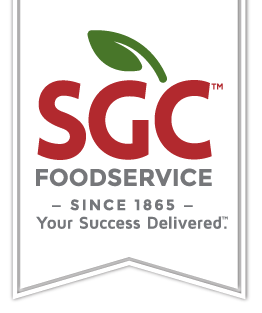A lot of factors have put an increasing amount of pressure on restaurants to improve their online presence. Whether through disruptions due to the economy, increased competition, or changes in the importance of having a strong online presence, we know we have to up our game.
Right now, improving visibility at the local level is essential for both in-person dining and carry-out options. There are a lot of paid ads, partner services, and referral options for gaining traffic. However, rising to the top of Google in the organic search results and Map Pack are effective, often lower-cost ways of getting the most relevant and direct traffic to turn into customers.
1. Define Your SEO & Content Strategies
Before jumping into a multitude of tools, platforms, and engagement channels, define your SEO strategy. This will help to greatly narrow your competition and give you a quicker path to driving quality traffic to your website.
Start by defining the geographic area you want to own (where most of your customers will come from because they either live or work nearby, or are visiting). Next, research what keyword terms and phrases your audience uses through a trusted keyword research tool like Moz Pro, SEMrush, or others.
2. Dominate in Local Search
To dive into local search, start by claiming, standardizing data, and optimizing listings for your restaurant across all of the major and relevant local search properties. This includes a mix of search engine directories, social media sites, and industry-specific directory sites. Moz Local and Yext are two tools that can help you understand what directories and external data sources are out there and then you can ensure they are updated.
Accurate NAP (name, address, phone) data that is consistent across all data sources is a critical foundational element of local SEO. Beyond that, you can then work on optimizing the fields of information like the business description and business categories to align with your focus terms identified in your keyword research.
Put your focus on the directories that matter. Start with Google My Business, then branch out to Yelp, TripAdvisor, Foursquare, CitySearch, various yellow pages, and other emerging niche review websites. All of this will work together to grow your online visibility.
3. Engage With Customers on Social Media
Even though social media’s direct impact on SEO has long been debated, we know that social media engagement can drive users to your site. Social media can be a powerful touchpoint of the customer journey, showcasing what customers can expect to experience at your restaurant.
A strong social presence often correlates with a strong organic search presence as content, engagement, and popularity align with the important SEO pillars of relevance and authority. Develop a social media strategy and follow through with implementation.
Make sure to engage with followers and reply to inquiries promptly. How you communicate online sets a perception of your overall customer service and approach. Find your audience, engage them, and get them to influence others on your behalf. Ultimately, through engagement with fans and promoting content on social media that funnels visitors to your main website, you will see an increase in visits from social networks. This will then correlate with the benefits from the rest of your SEO efforts.
4. Encourage Reviews & Testimonials
It’s nearly impossible to do a search for a restaurant and not see review and rating scores in the search results. That’s because people click on higher star ratings. Reviews are often considered as part of a social media strategy and are an engagement tactic but have a broader impact on traffic to your site through search results pages as well.
Through the use of structured data markup, you can have your star ratings appear in search results and provide another compelling reason for a user to click on your site versus your competitor’s. If you have online ratings that don’t reflect the quality of your restaurant, come up with a review strategy now to get as many reviews as possible to help bring up your score prior to implementing the code that will pull the ratings into the search engine results page. A higher star rating likely means a higher click-through rate to your site – and more foot traffic.
5. Consider Content Localization
Again, single-location restaurants have an easier road here. Based on decisions you’ve made about your market area, make sure you provide enough cues and context to users and the search engines as to where your restaurant is and what area it serves.
Sometimes the search engines and out-of-town visitors don’t fully understand the unofficial names of neighborhoods and areas. By providing content that is tied into the community and doesn’t simply assume that everyone knows where you’re located, you can help everyone out.
One example of this is a 100-location chain that started small with a single paragraph for each location written in a way that was tailored to the store, local history, neighborhood, and community engagement. From there, we were able to find other areas to scale, and it worked well to differentiate stores from each other.
6. Measure Your Efforts
With the previous tips, there’s something to do and implement. But before you embark on any aspect of optimization, make sure those efforts are measurable. When you’re investing in your strategy, you want to know what aspects are working, which ones aren’t, and where your efforts were (and are) best producing a return on investment. Track visibility, engagement, and conversion metrics as deep as you can connect them to your business.
Beyond that, you’ll need to identify the right progress metrics tied to goals so you know you’re moving in the right direction. If you want to make sure your restaurant is full, day in and day out – or that you’re maximizing your delivery and carry-out business – people need to be able to find you online.

